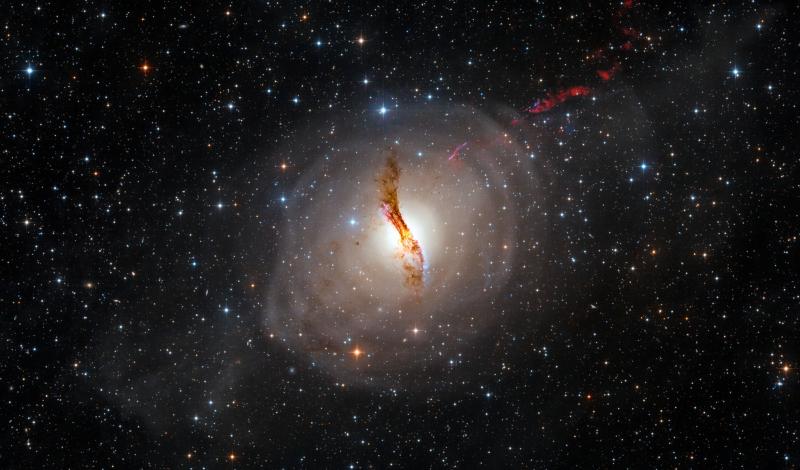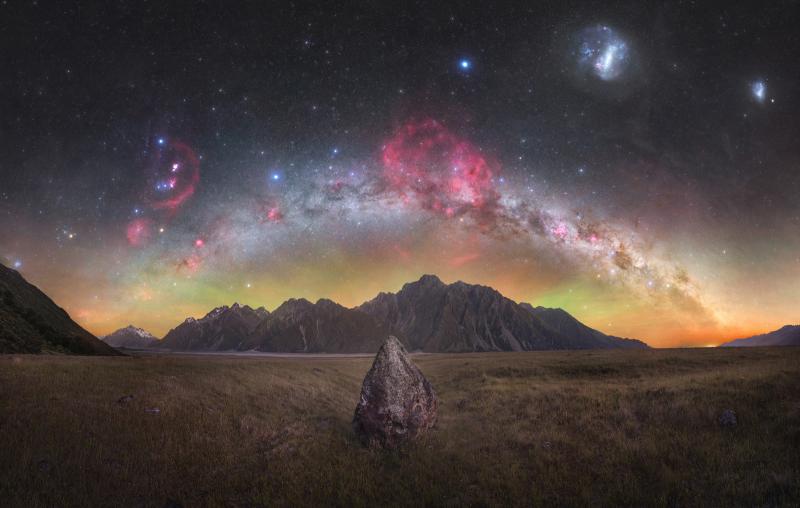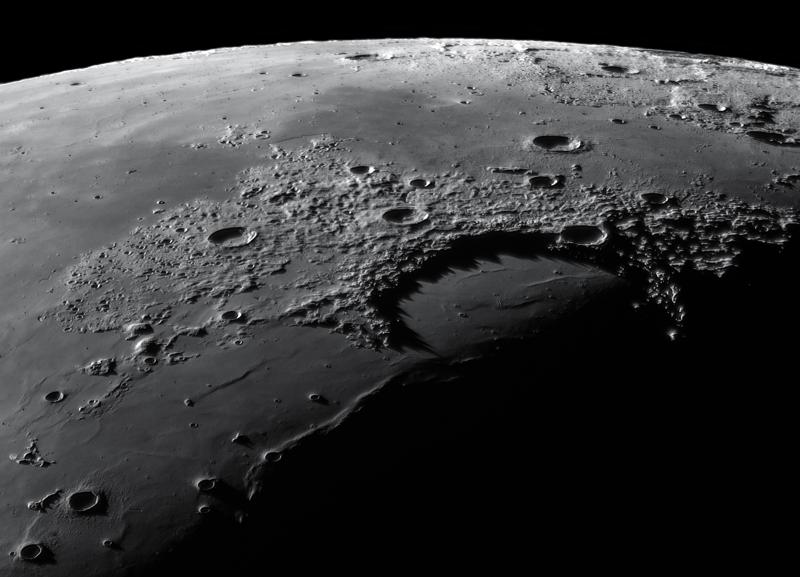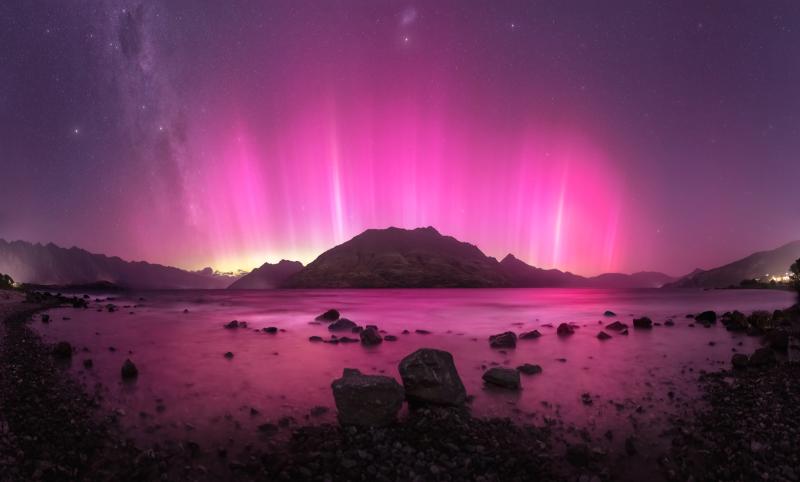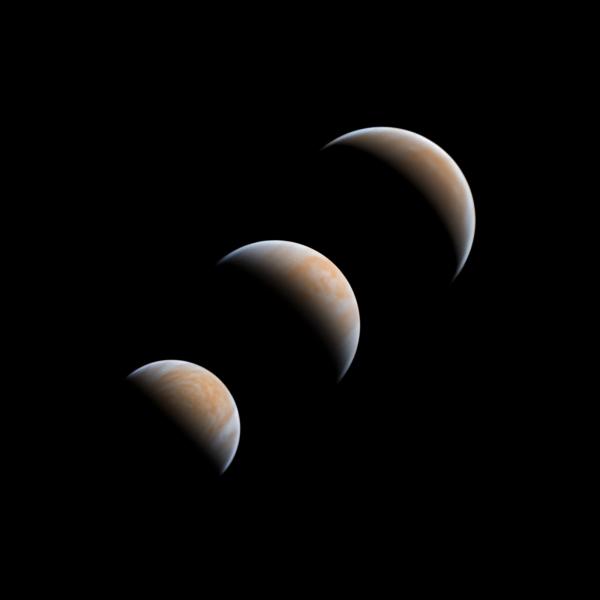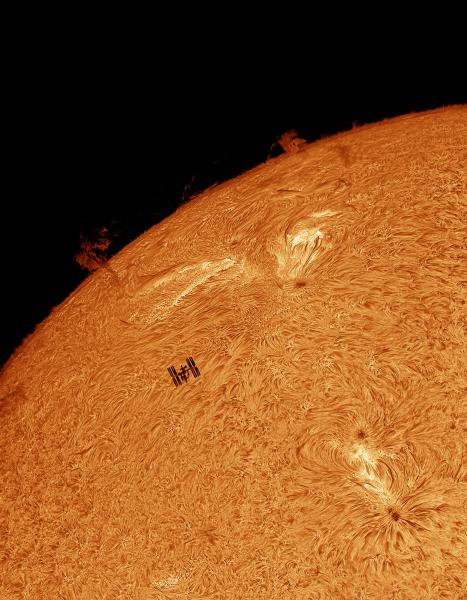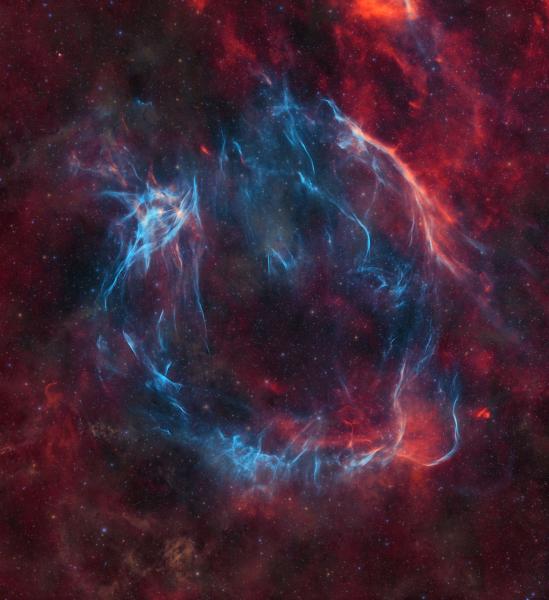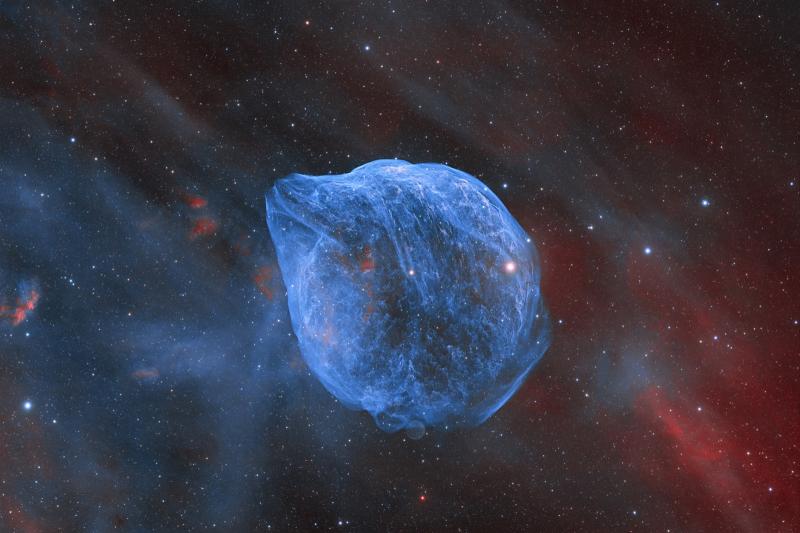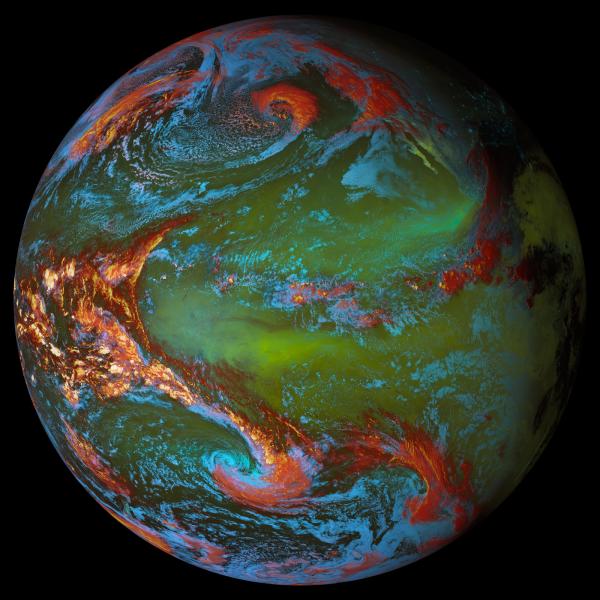
The winning image
NGC 1499, a Dusty California by Daniele Borsari, aged 14
"This image features a deep integration on the California Nebula, NGC 1499, an emission nebula in the constellation of Perseus. It’s located at a distance of about 1,000 light years from Earth and it’s visible thanks to the ionization of gases by the blue giant star ξ Persei (Menkib)," says Daniele.
"Background dust was captured with just a UV/IR Cut filter and emission nebulae with the Optolong L-eNhance narrowband filter. Later in the processing I combined the broadband and narrowband data, which made a big difference, especially in showing weaker emissions of hydrogen."
Taken in Bergamo, Lombardy, Italy, 7, 8, 11 and 14 October, 5, 7 and 8 November 2023
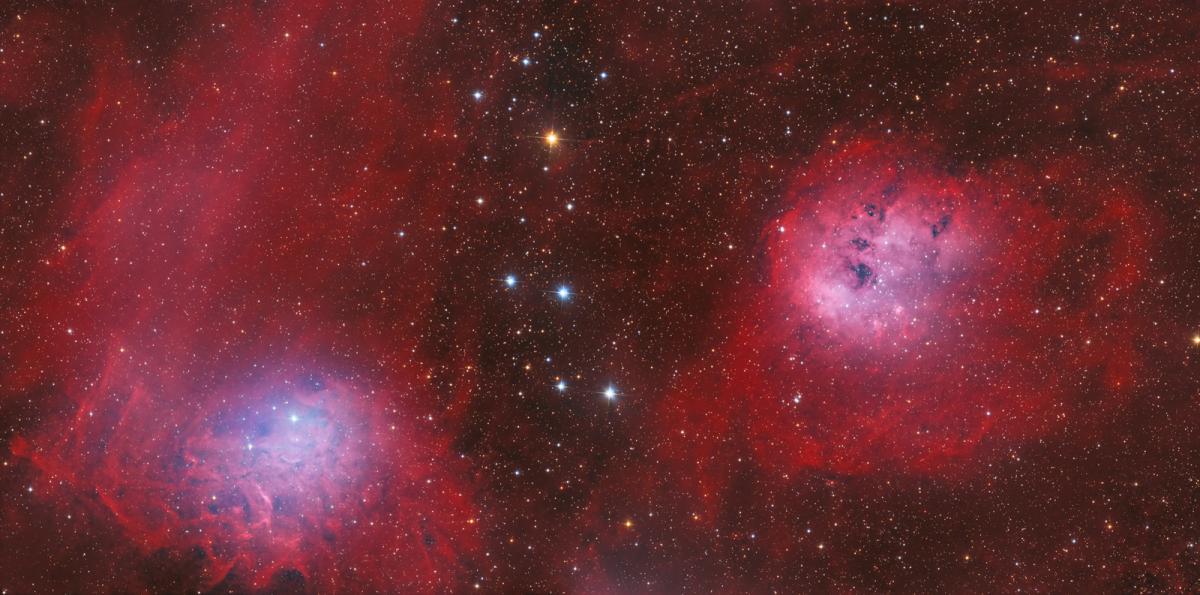
Runner-up
IC 405 and IC 410: the Flaming Star and Tadpole Nebulae by Sonny Chart, aged 15
Sonny explains, "This image was my first ever mosaic, using around five hours total integration time from my garden.
"Image capturing, planning, processing was all done by me. It was stacked in DeepSkyStacker and processed in PixInsight with BlurXTerminator and NoiseXterminator. I noticed after stitching that the blue channel was very different between the two panels, so to fix this I extracted the RGB channels and combined in RGG for a HOO-like [H-alpha, OIII, OIII] filter."
Taken in Crawley, West Sussex, UK, 7 January 2024
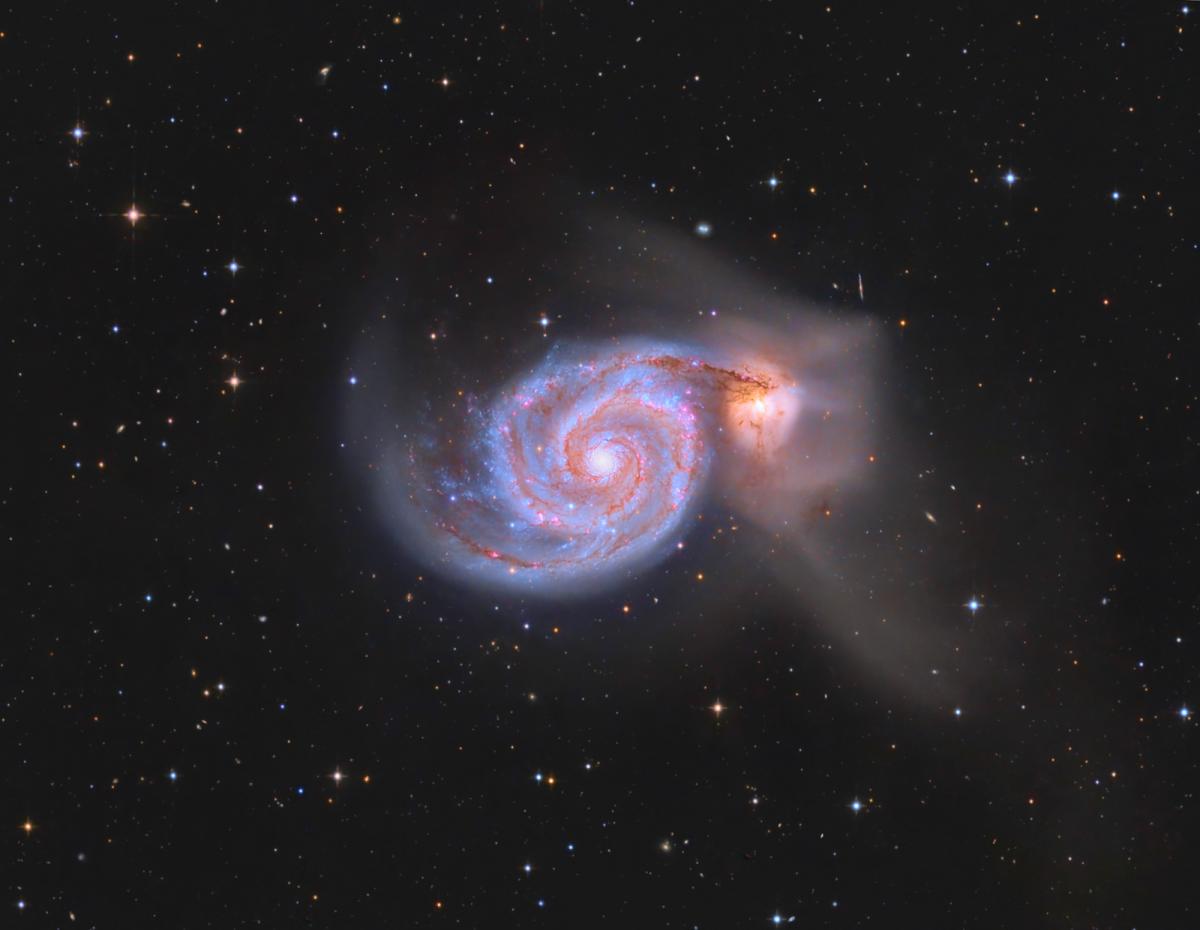
Highly commended
M51: the Whirlpool Galaxy by ZiYang Chang , aged 14
"The Whirlpool Galaxy, located in the constellation Canes Venatici, is interacting and colliding with its neighbouring galaxy, NGC 5195, resulting in its peculiar shape today," says ZiYang.
"Due to the small area it occupies in the sky and its high degree of brightness, it achieves an excellent signal-to-noise ratio when using a 150 mm aperture telescope. This significantly improves the efficiency of the photography. To enhance the resolution, I accumulated 30 hours of data and, after an extremely long exposure, the white cloud bands surrounding M51 are also displayed."
Taken in Yanqing District, Beijing, China,18, 23 and 25 March, 11, 14, 15, 18 and 25 April 2023
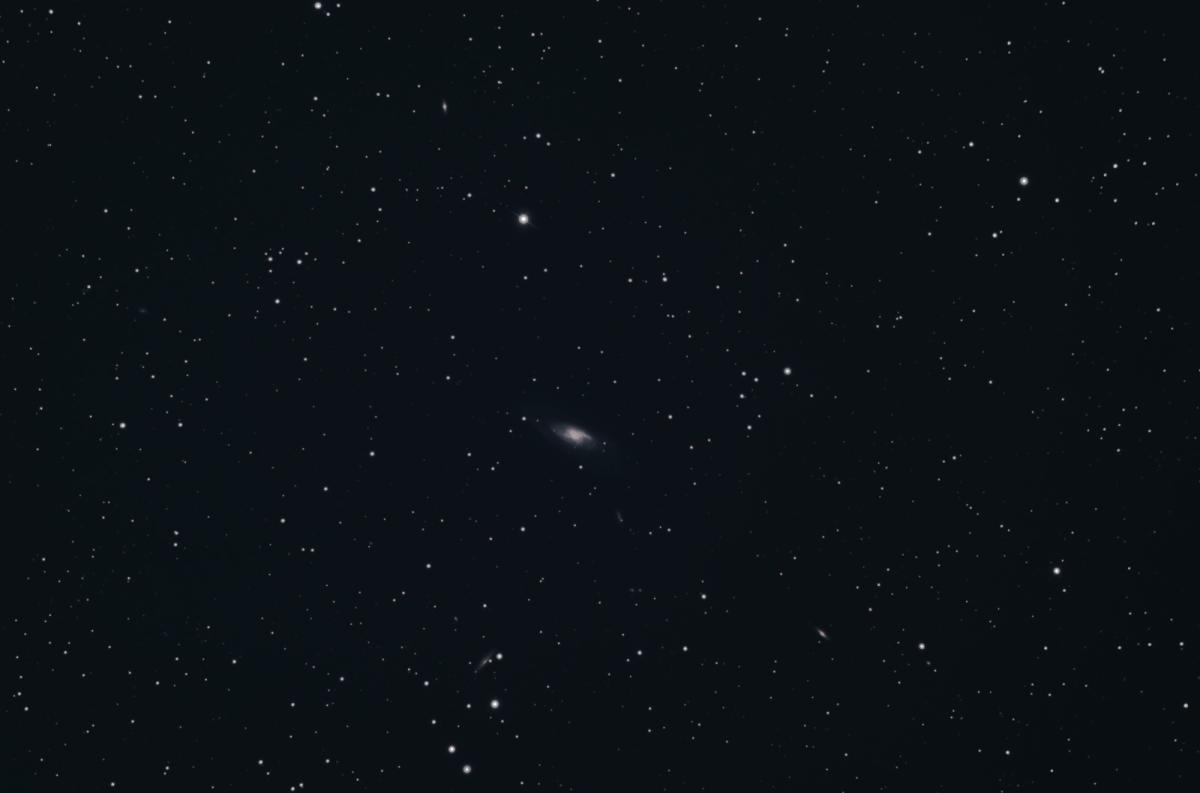
Highly commended
M106, a Spiral Galaxy by Benjamin Lawler (aged 8) and Joshua Lawler (aged 10)
"This is a cool picture showing so many galaxies out in deep space. It makes me want to save up and get a bigger telescope! But first I need to get better at processing my pictures. The main galaxy in the image is M106. Although it’s a massive 22 million light years from Earth, I can see it from my back garden!" says Benjamin.
"Before getting my first telescope for Christmas 2022 I did not realize how cloudy the UK is. It’s very hard to get a clear night that is not too late or on a school night. And it’s always raining. This picture was taken a day before the competition deadline on a very clear but cold night. It’s over 300 images stacked together."
Taken in Tutbury, Staffordshire, UK, 3 March 2024
Learn more about the youngest photographers in this year's competition.
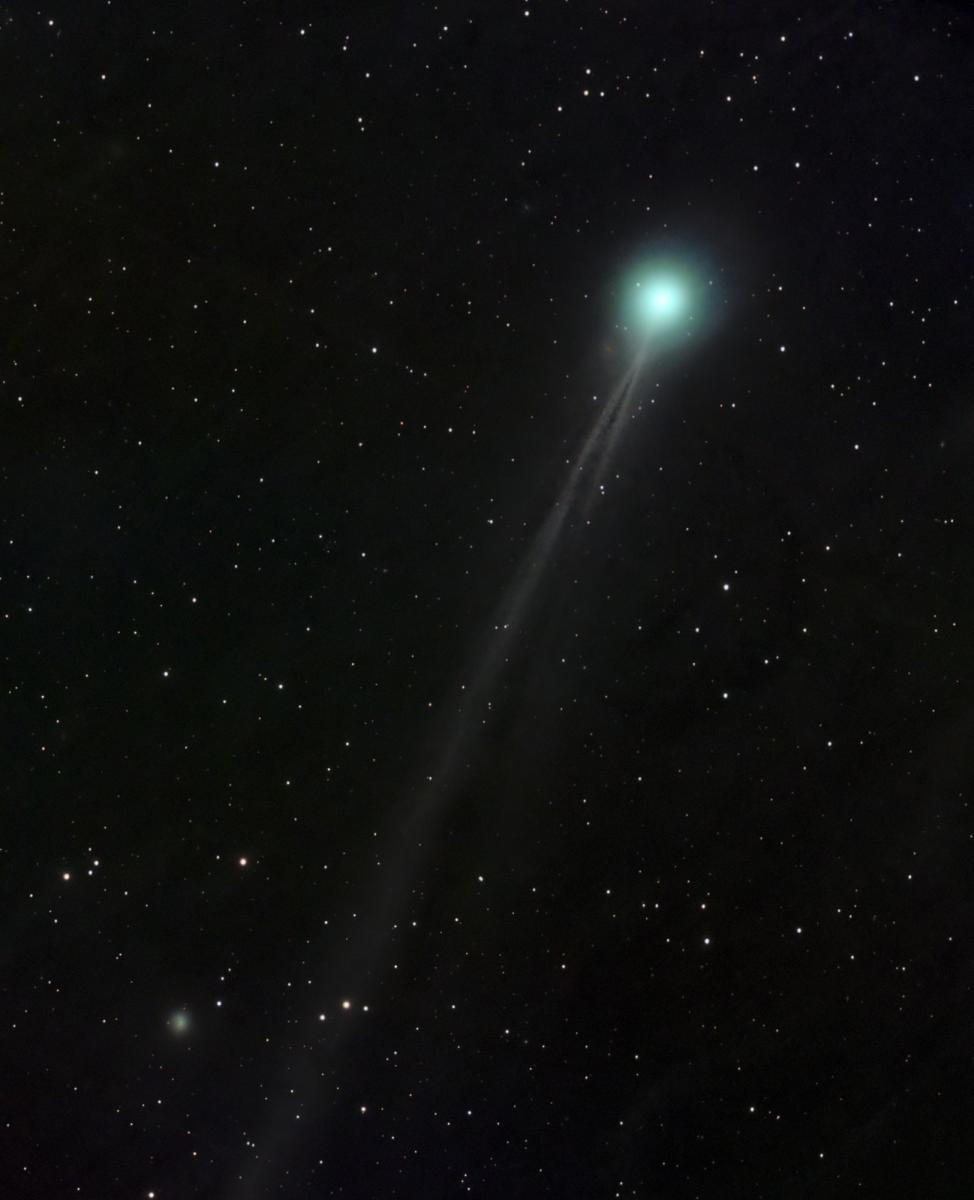
Highly commended
Double Comet by Runwei Xu, aged 15
"When filming the Nishimura Comet, I accidentally discovered another comet which I later identified as comet 29P," Runwei says. "The Nishimura Comet has an orbital period of 437 years, which means this was the only chance to meet it. Therefore, we cannot help but marvel at the insignificance of humanity."
Kangbao County, Hebei Province, China, 28 August 2023
See the full shortlist
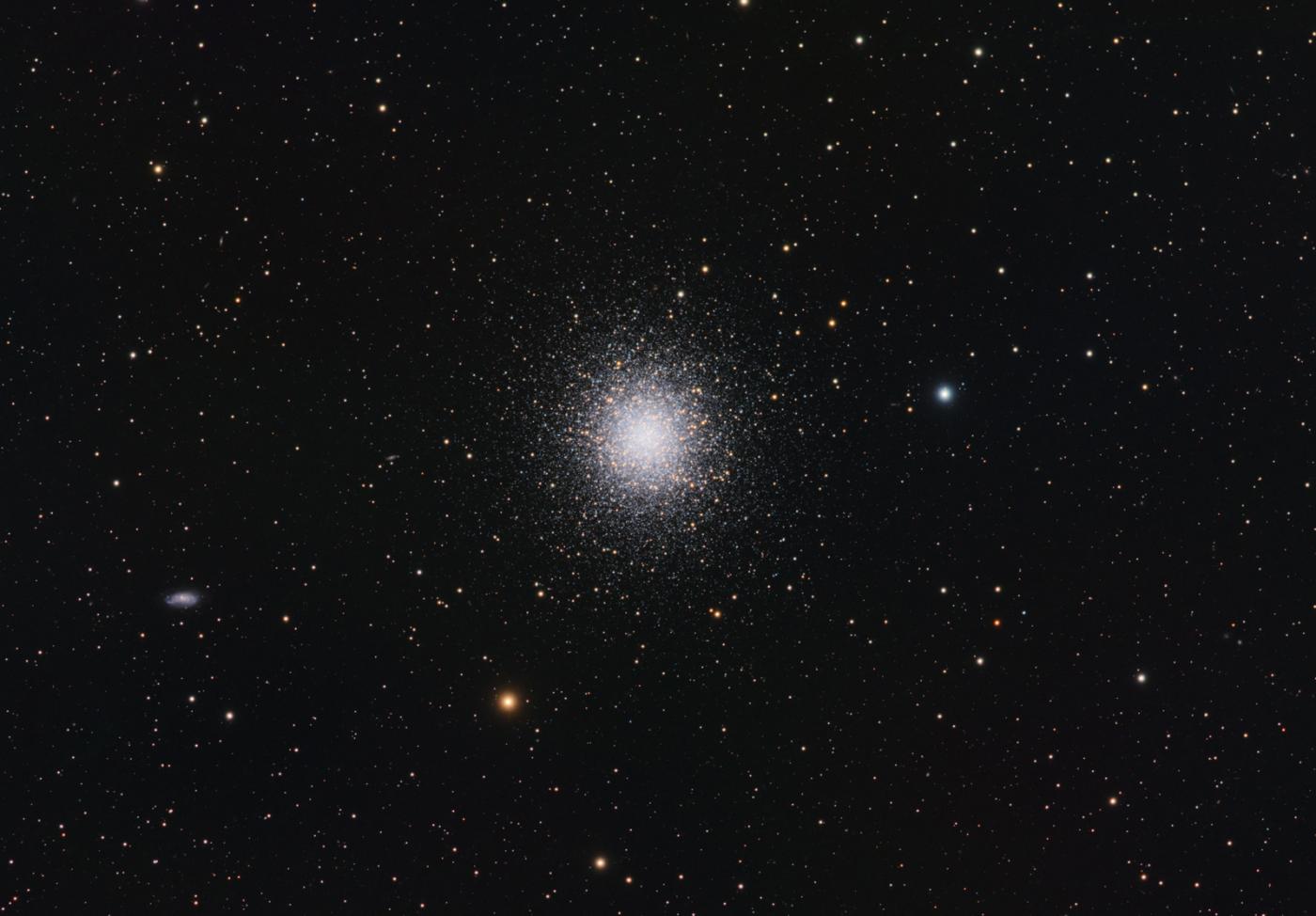
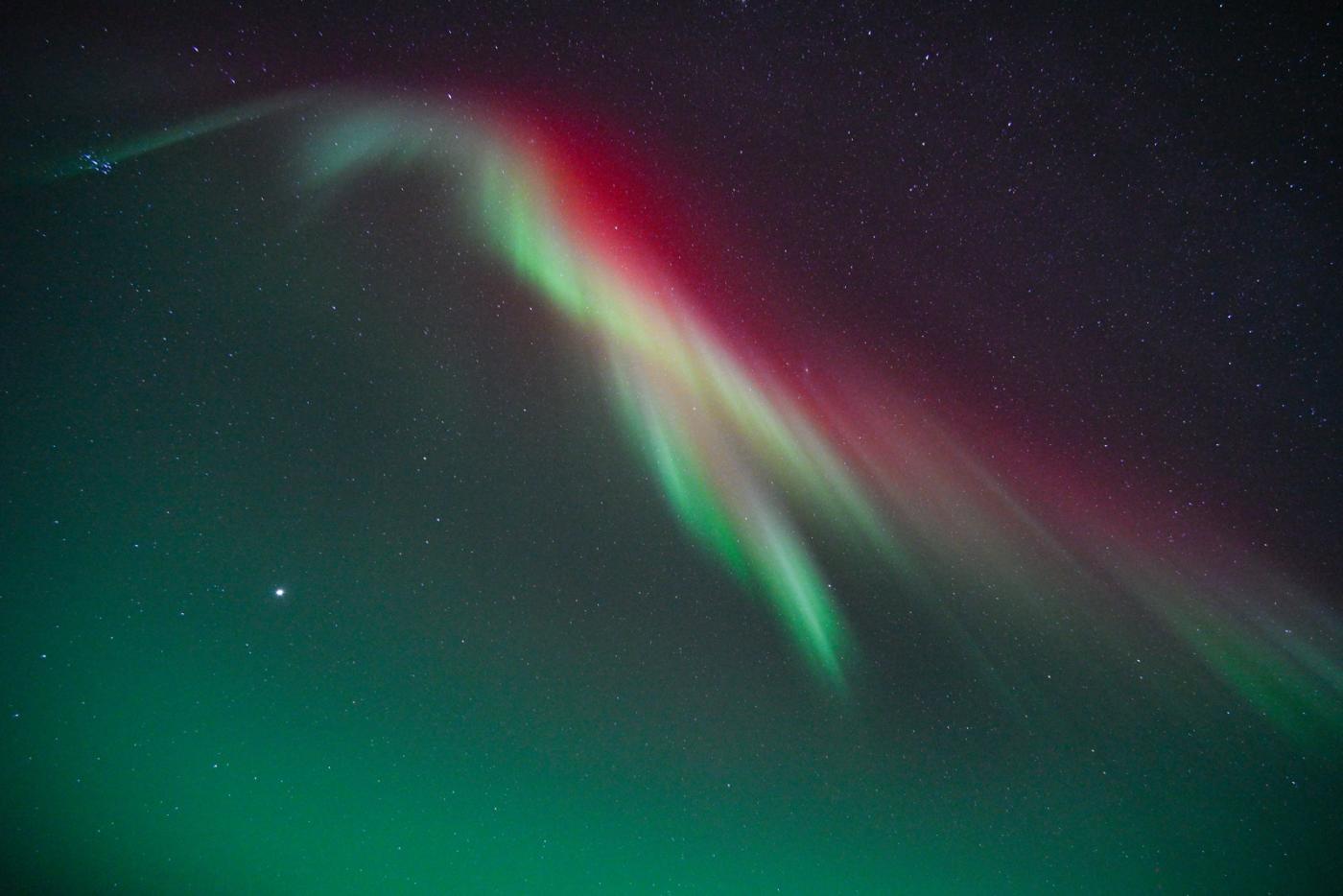
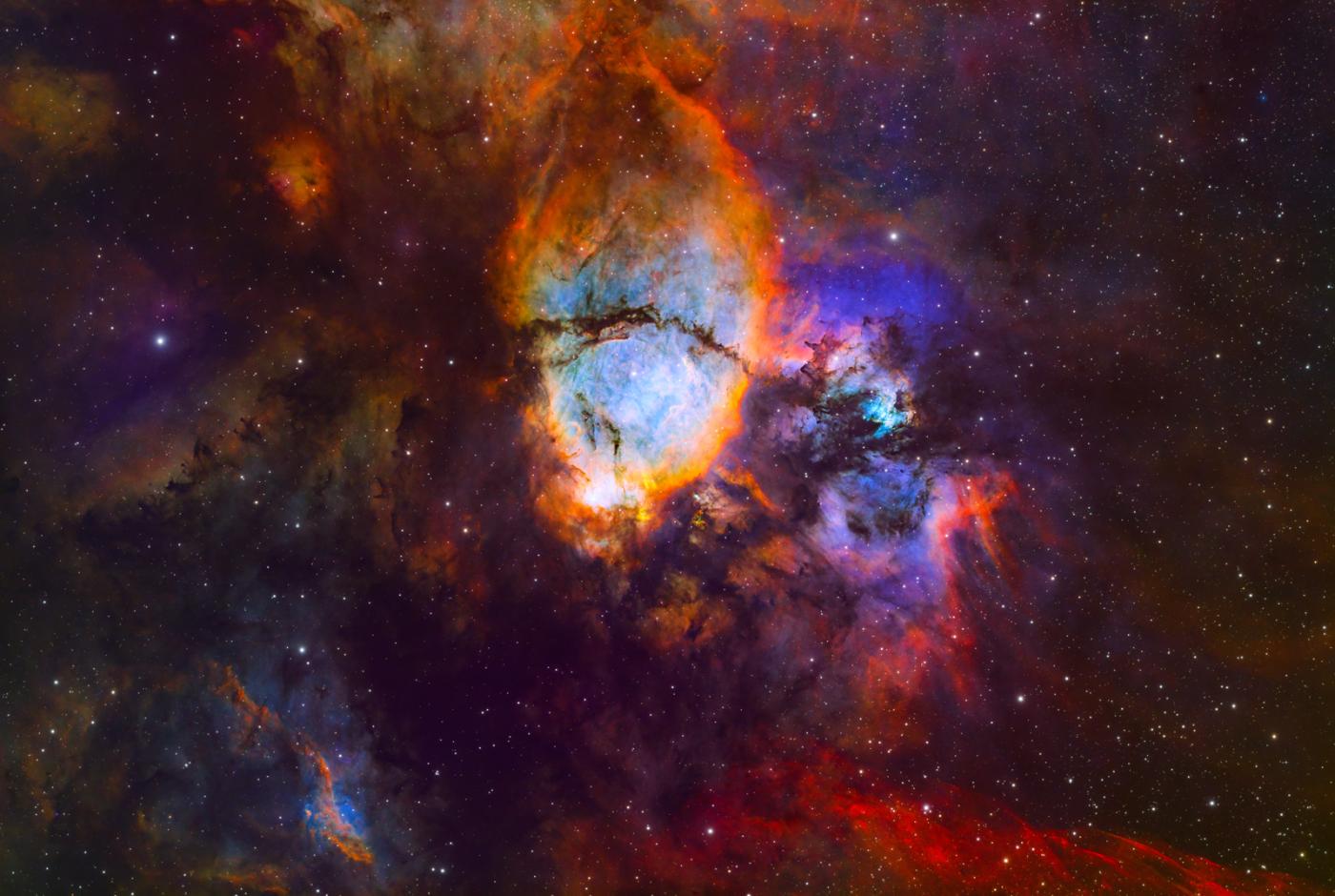
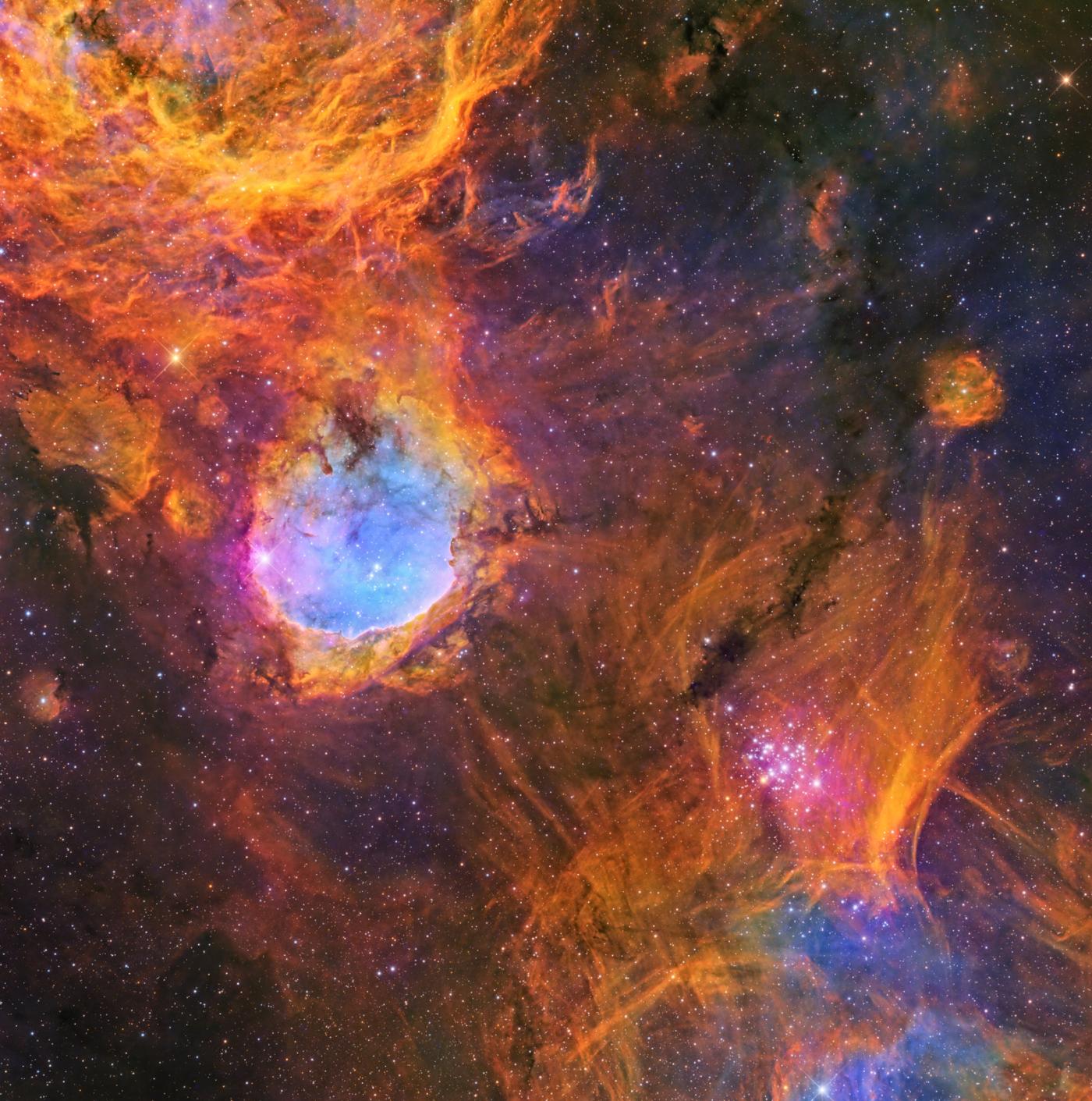
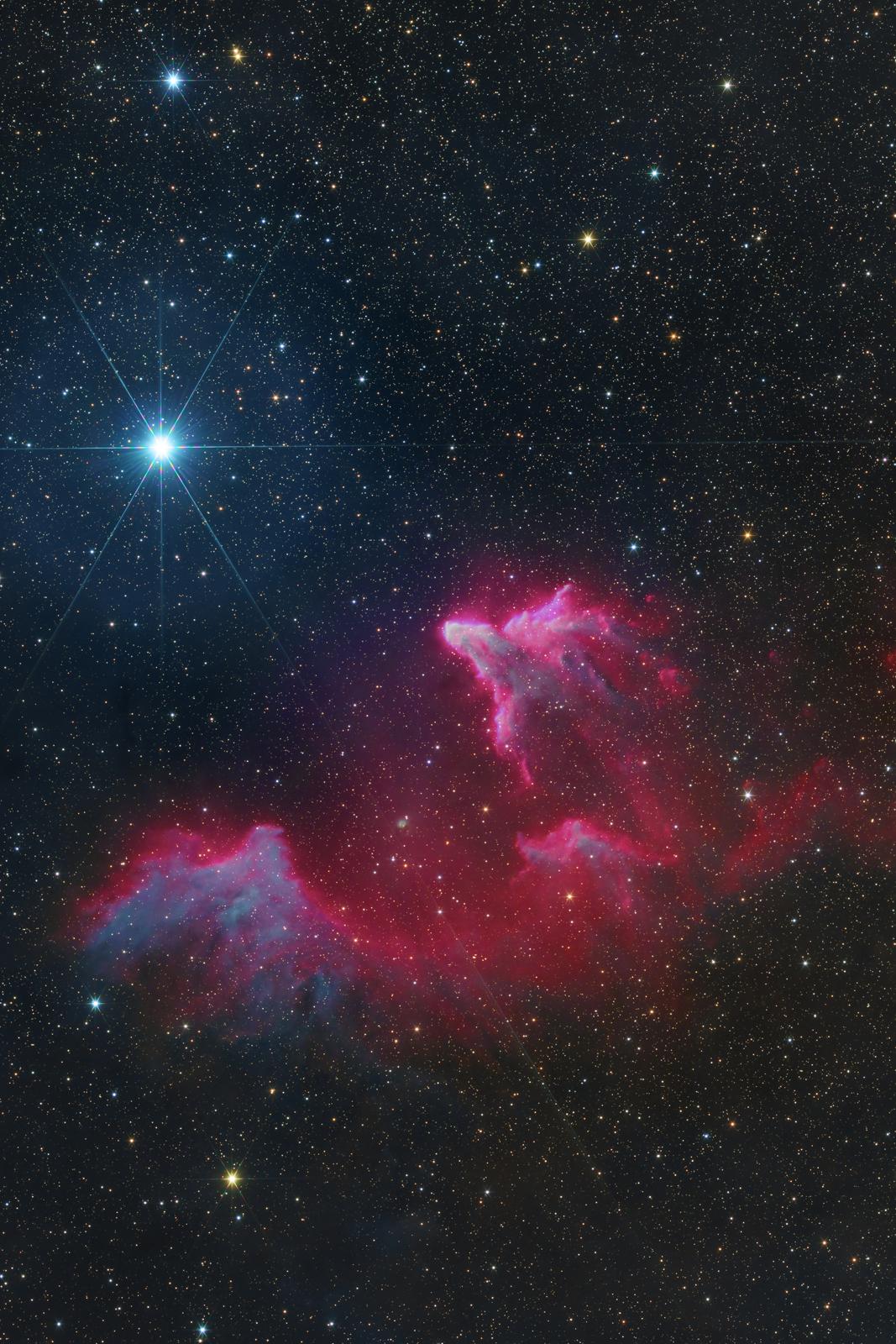
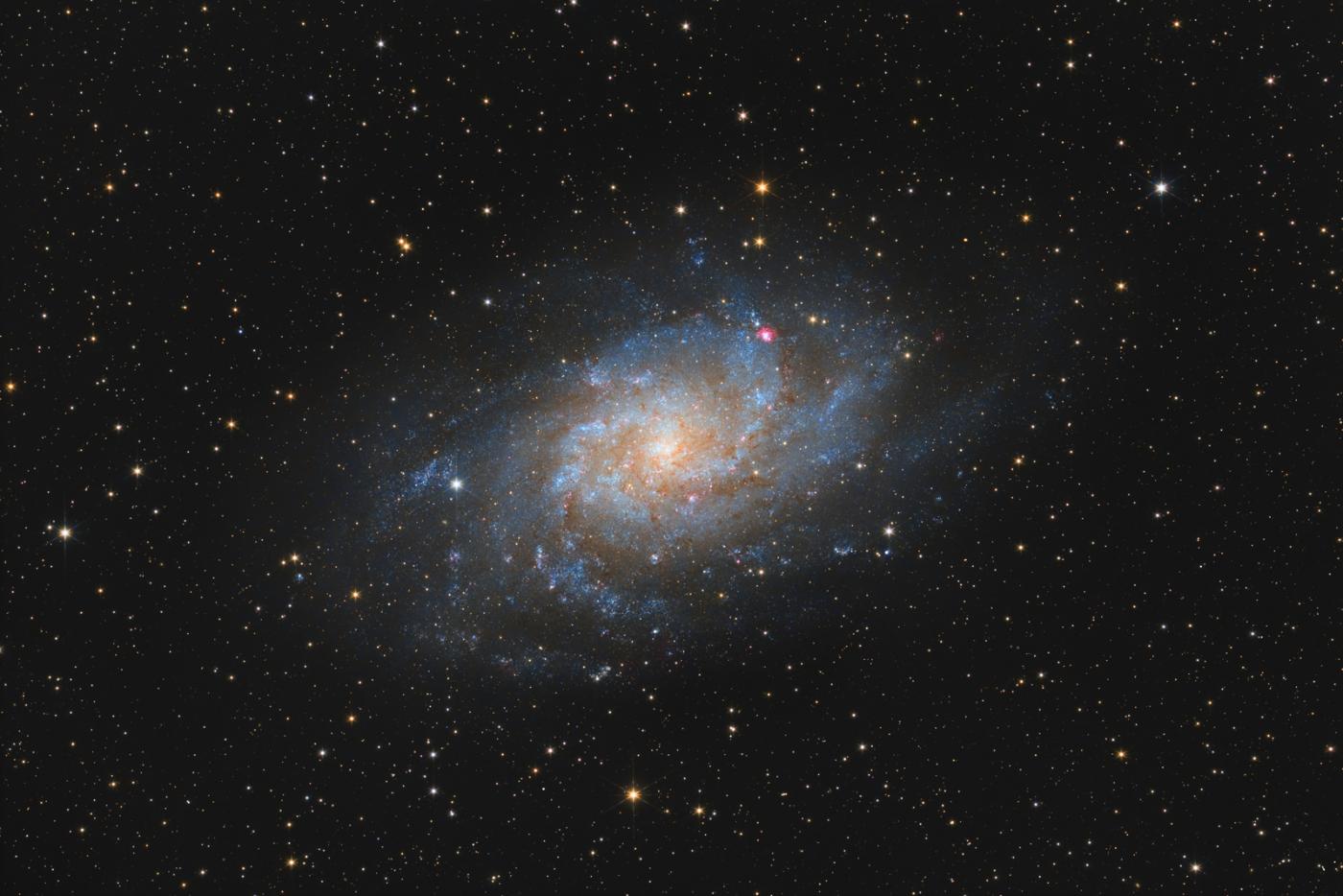
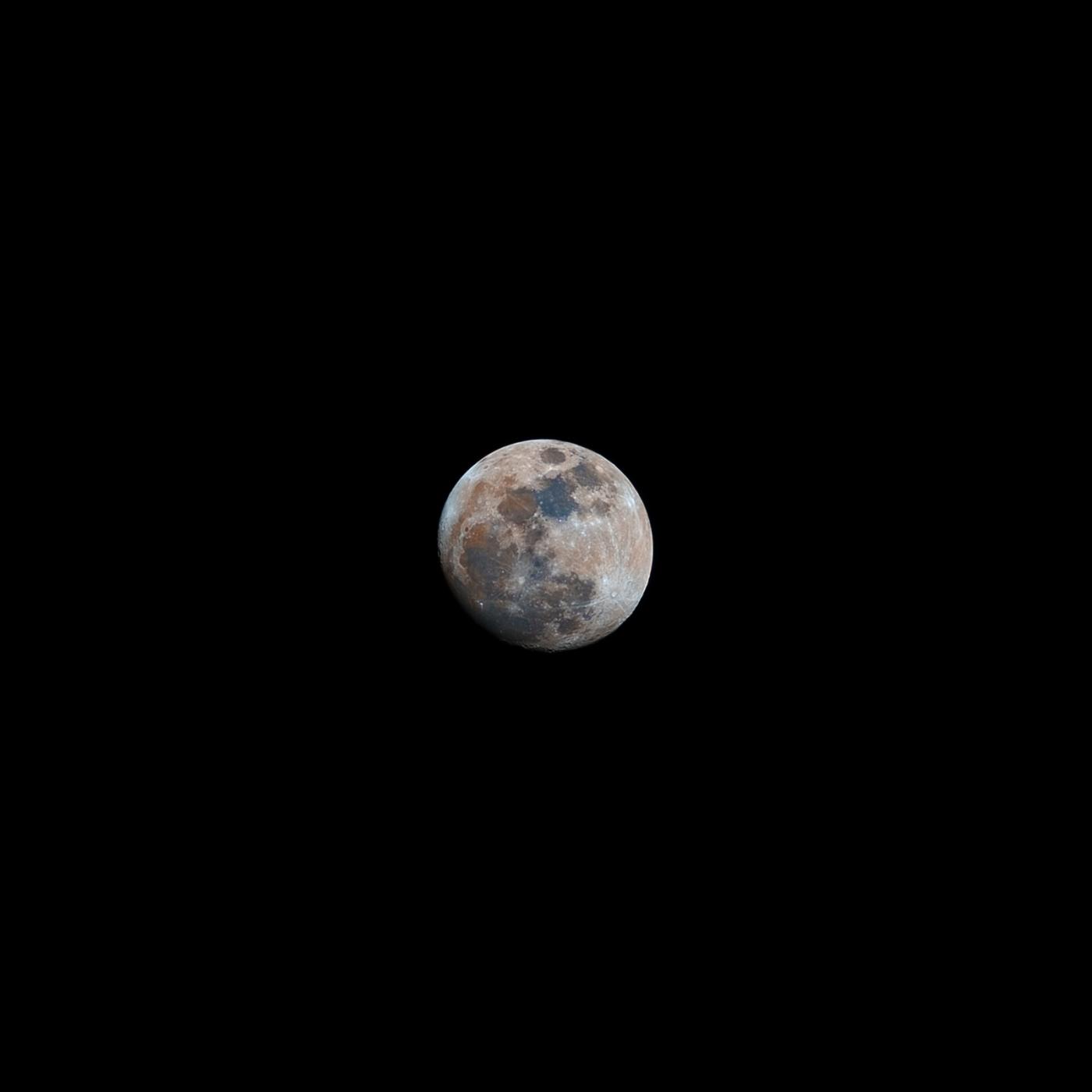
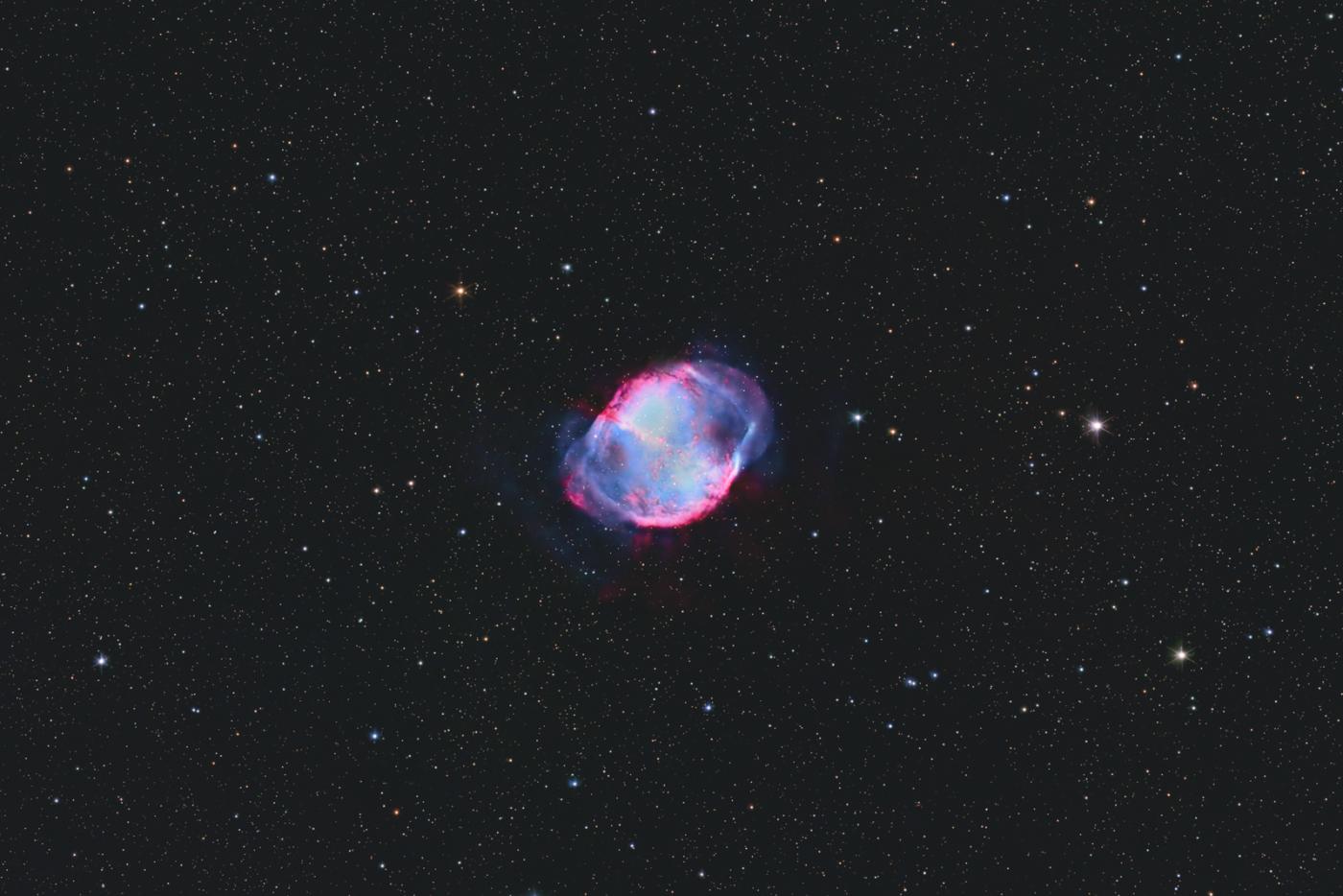
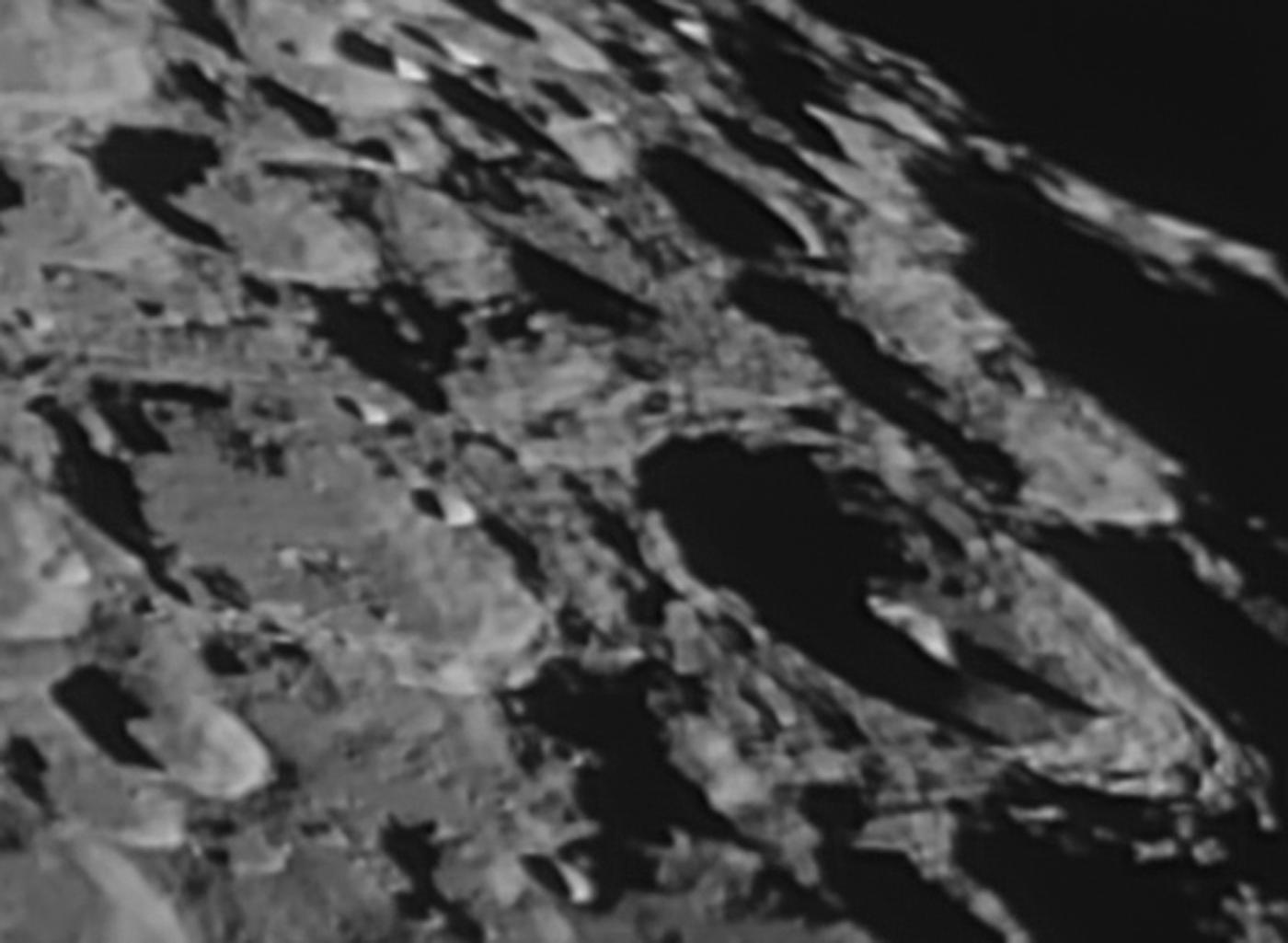
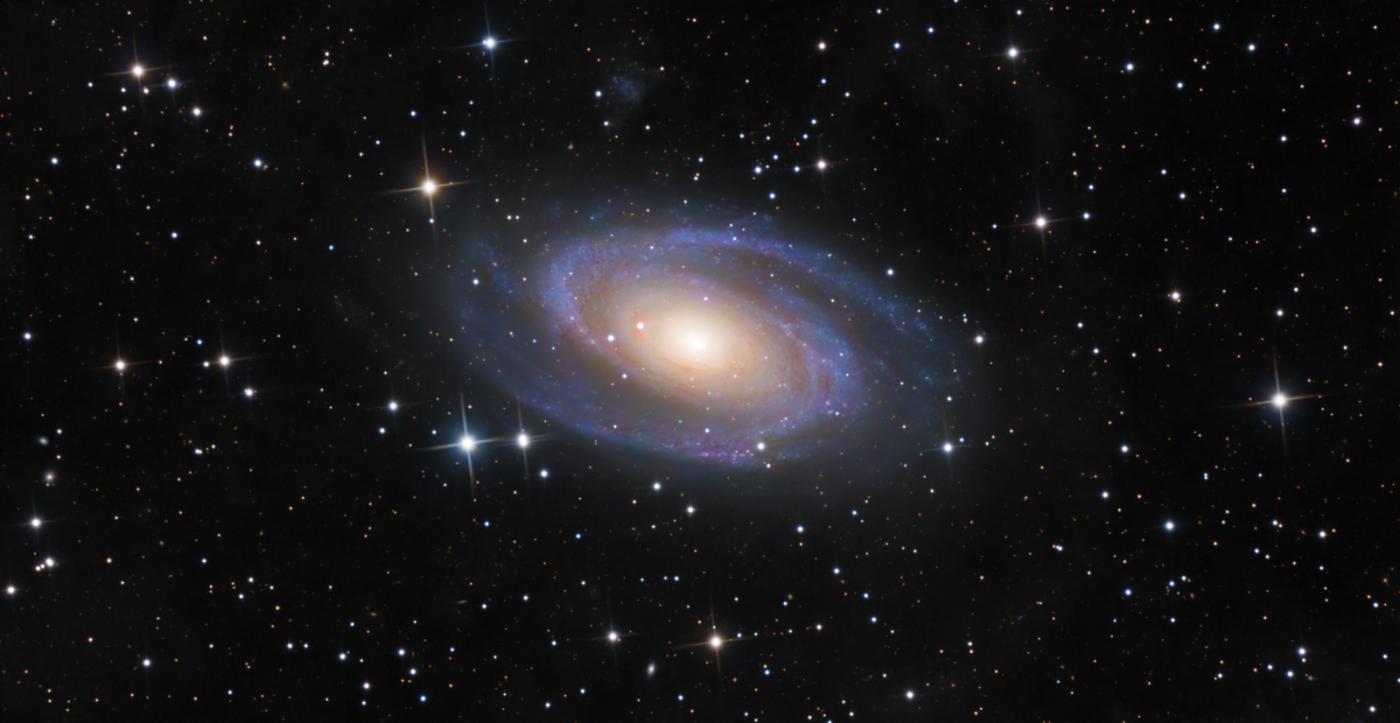
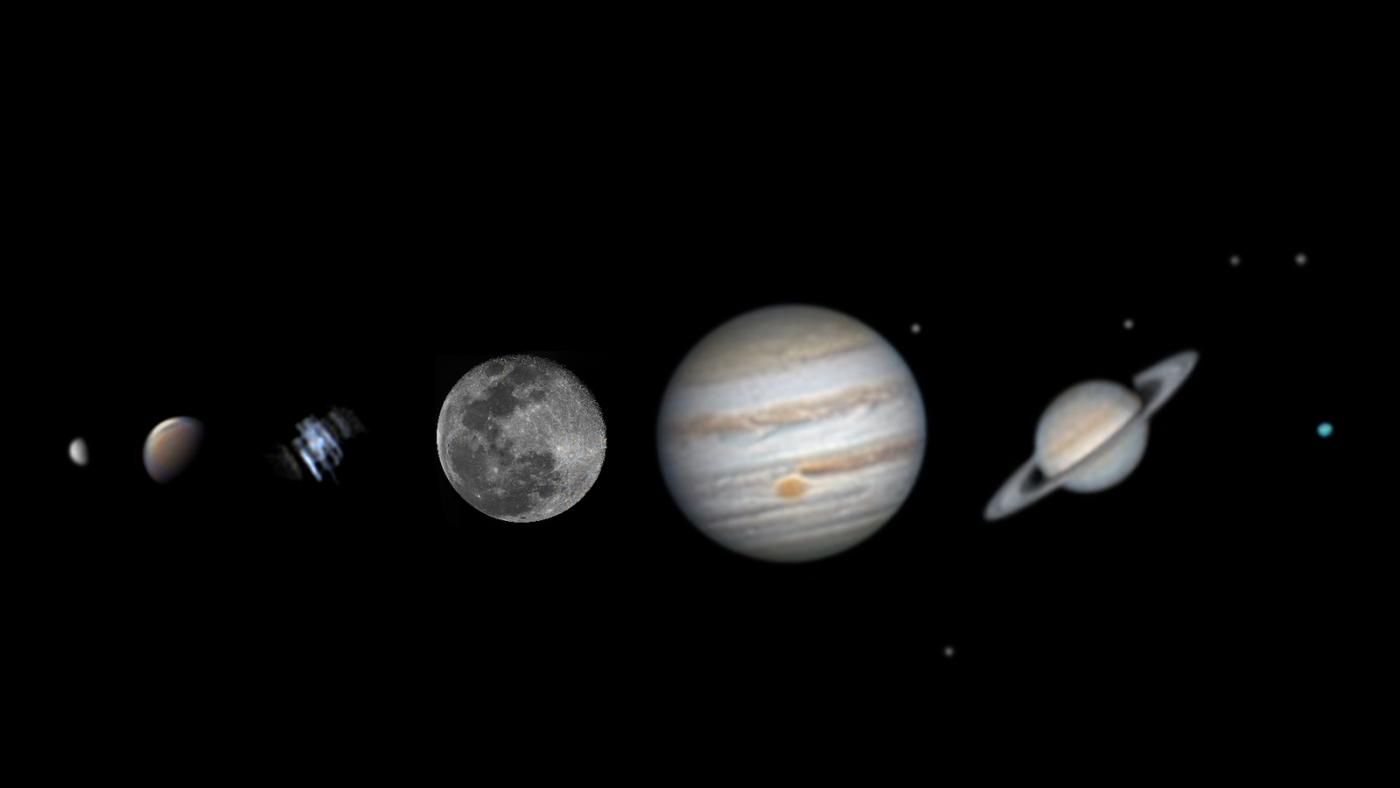
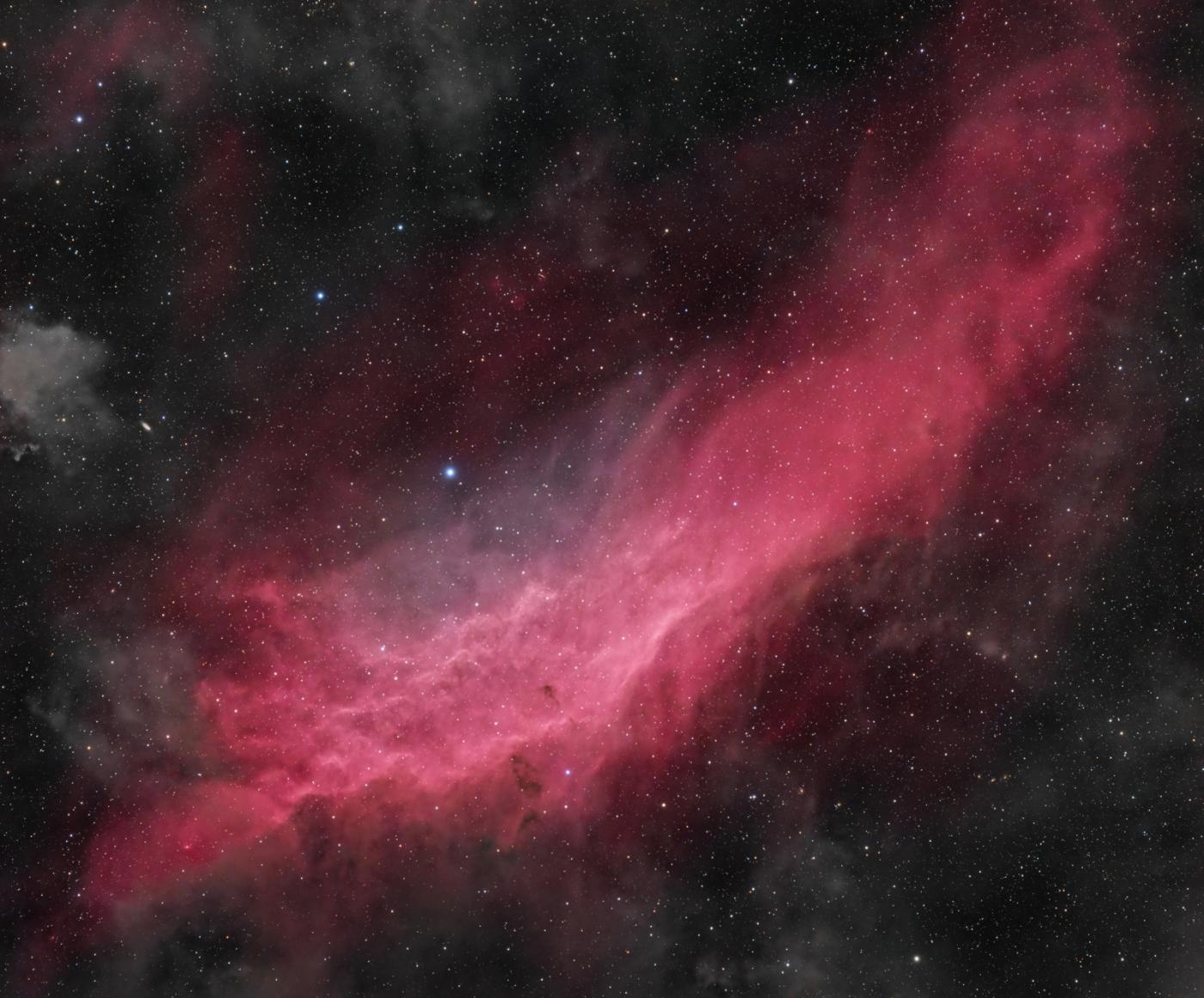
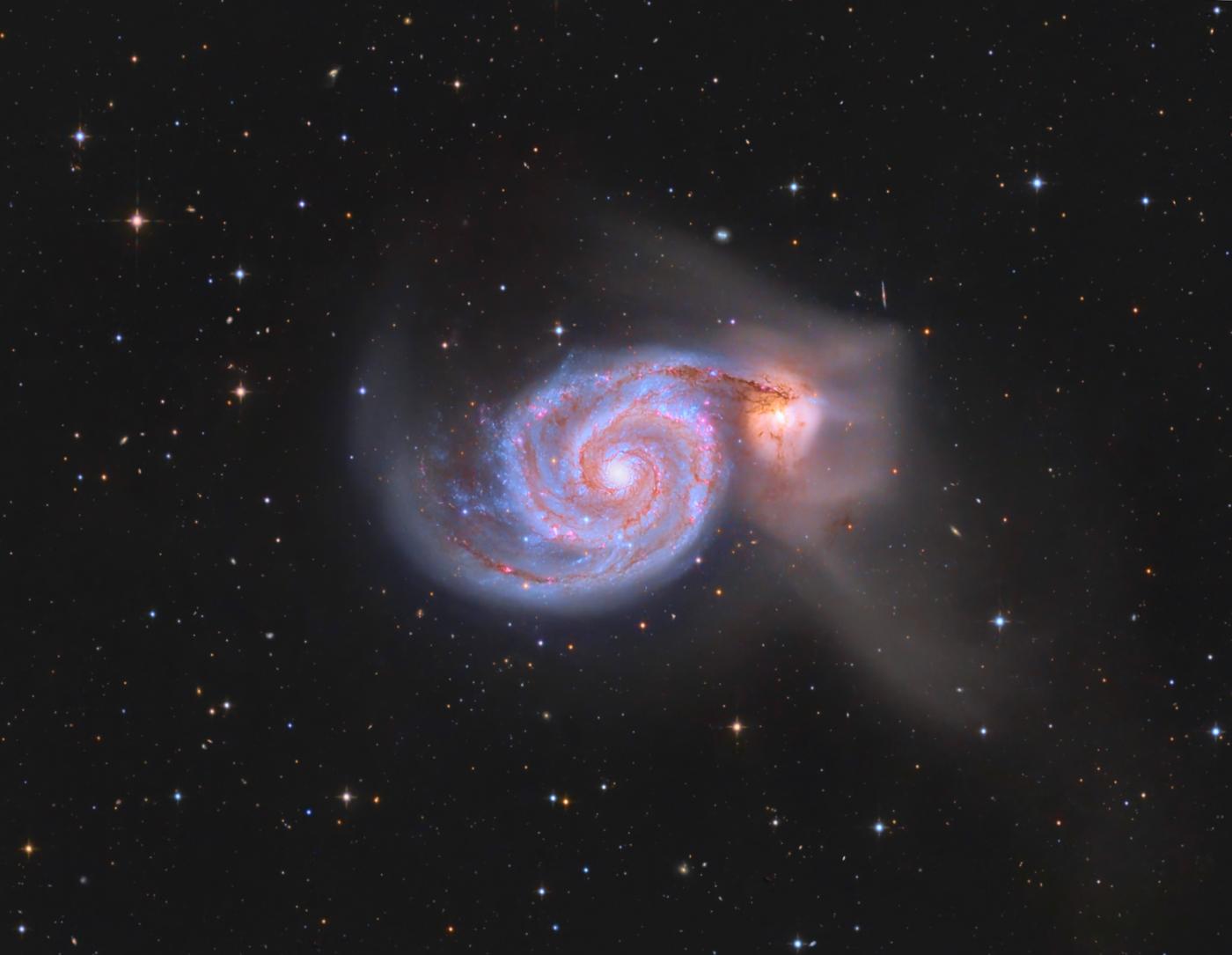
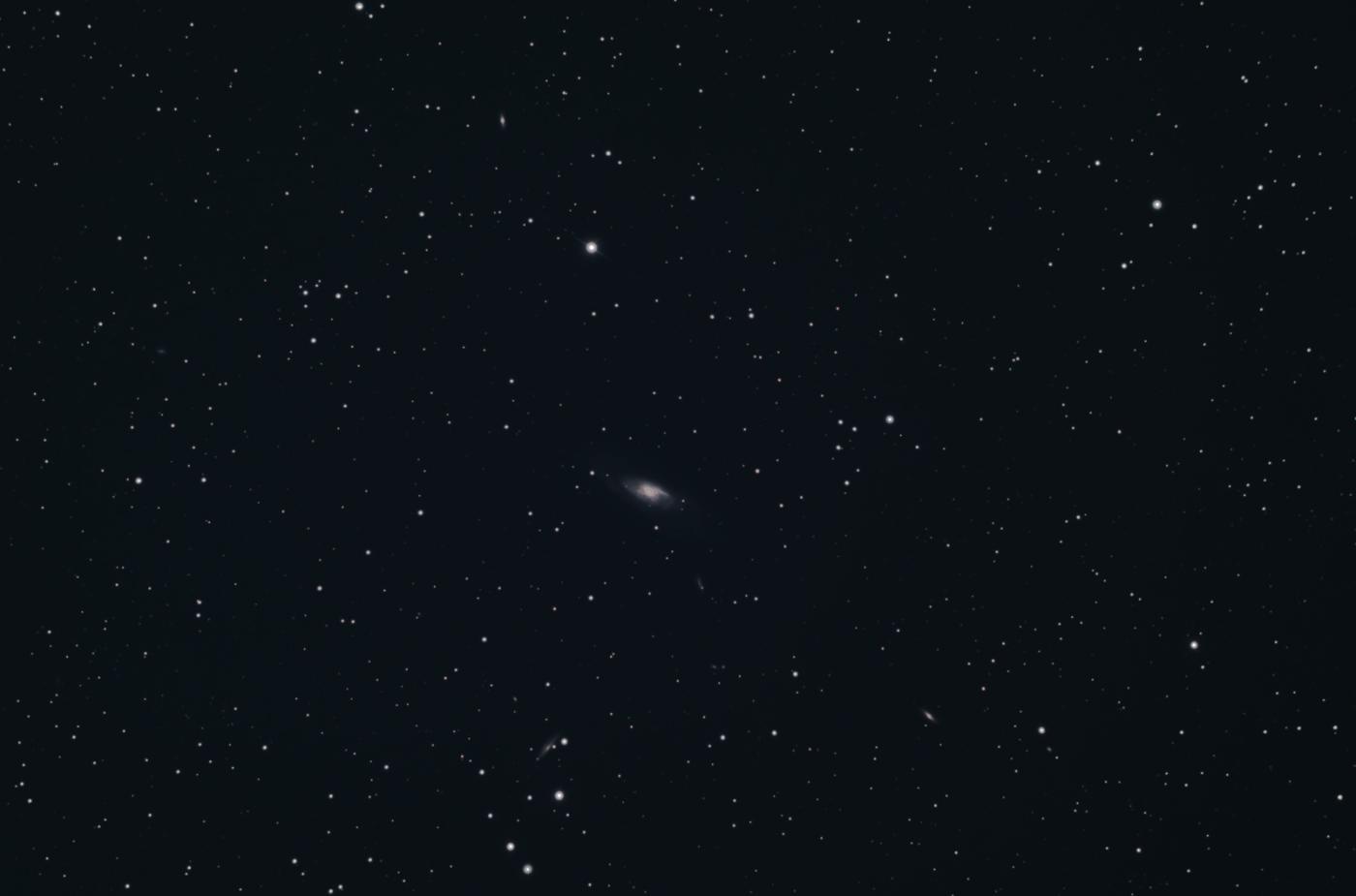
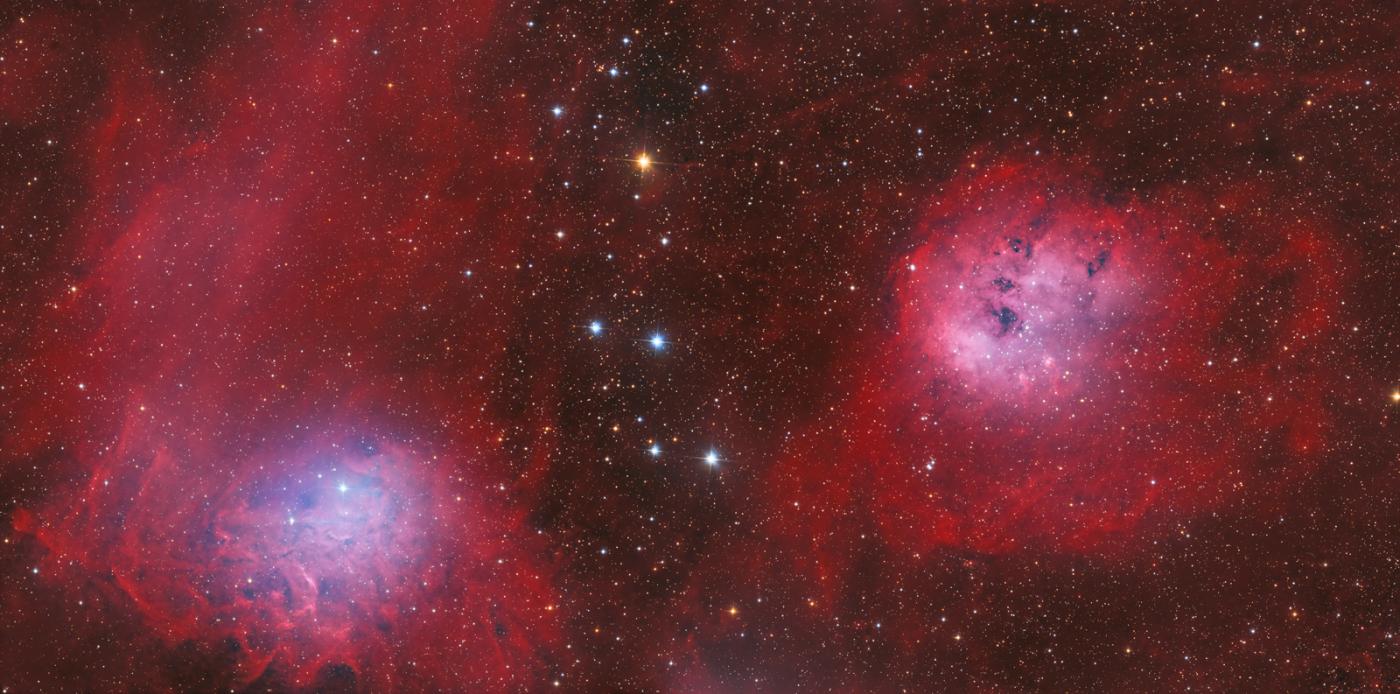
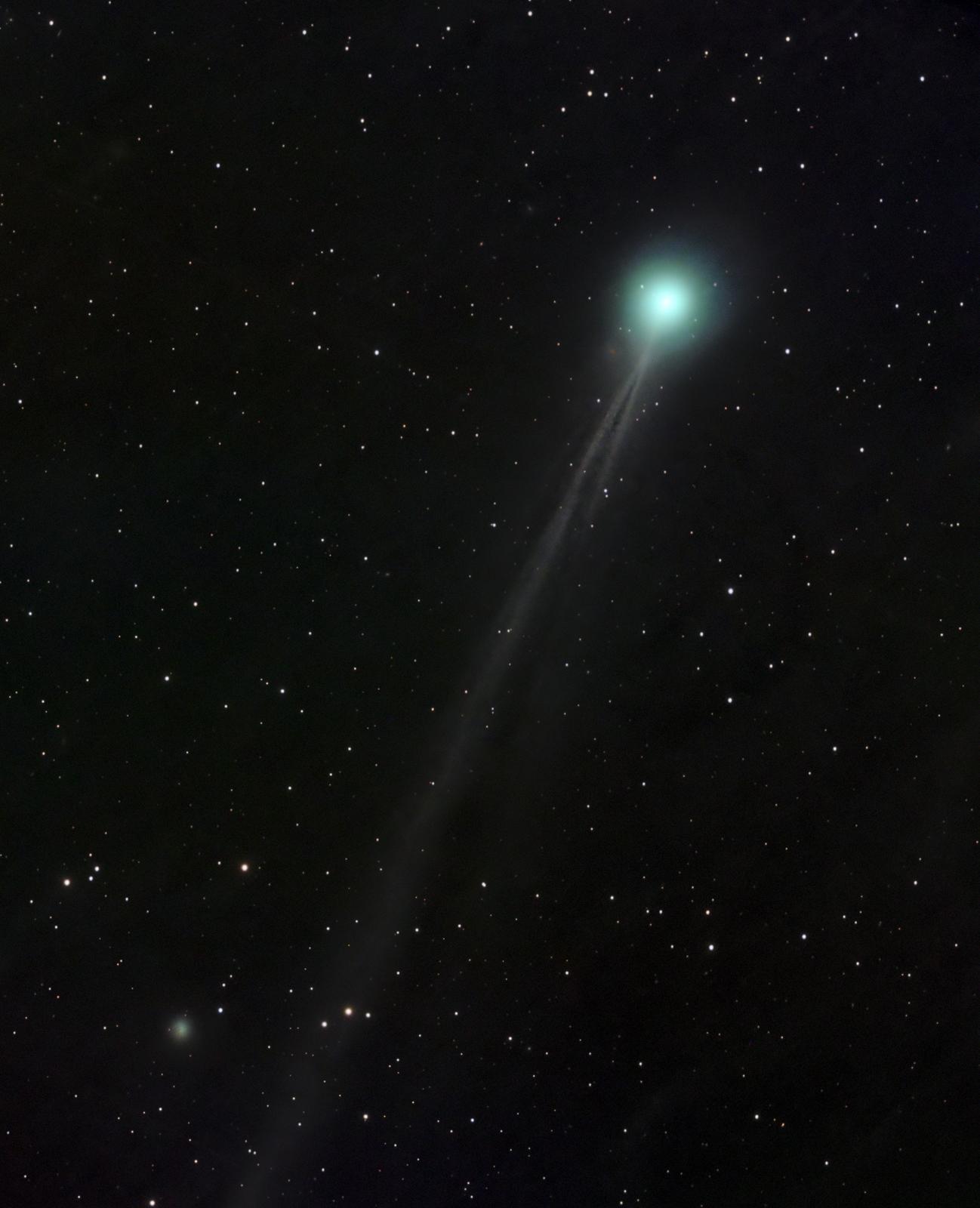
See the full shortlist
Never miss a shooting star
Sign up to our space newsletter for exclusive astronomy news, guides and events from Royal Museums Greenwich.
Explore more categories
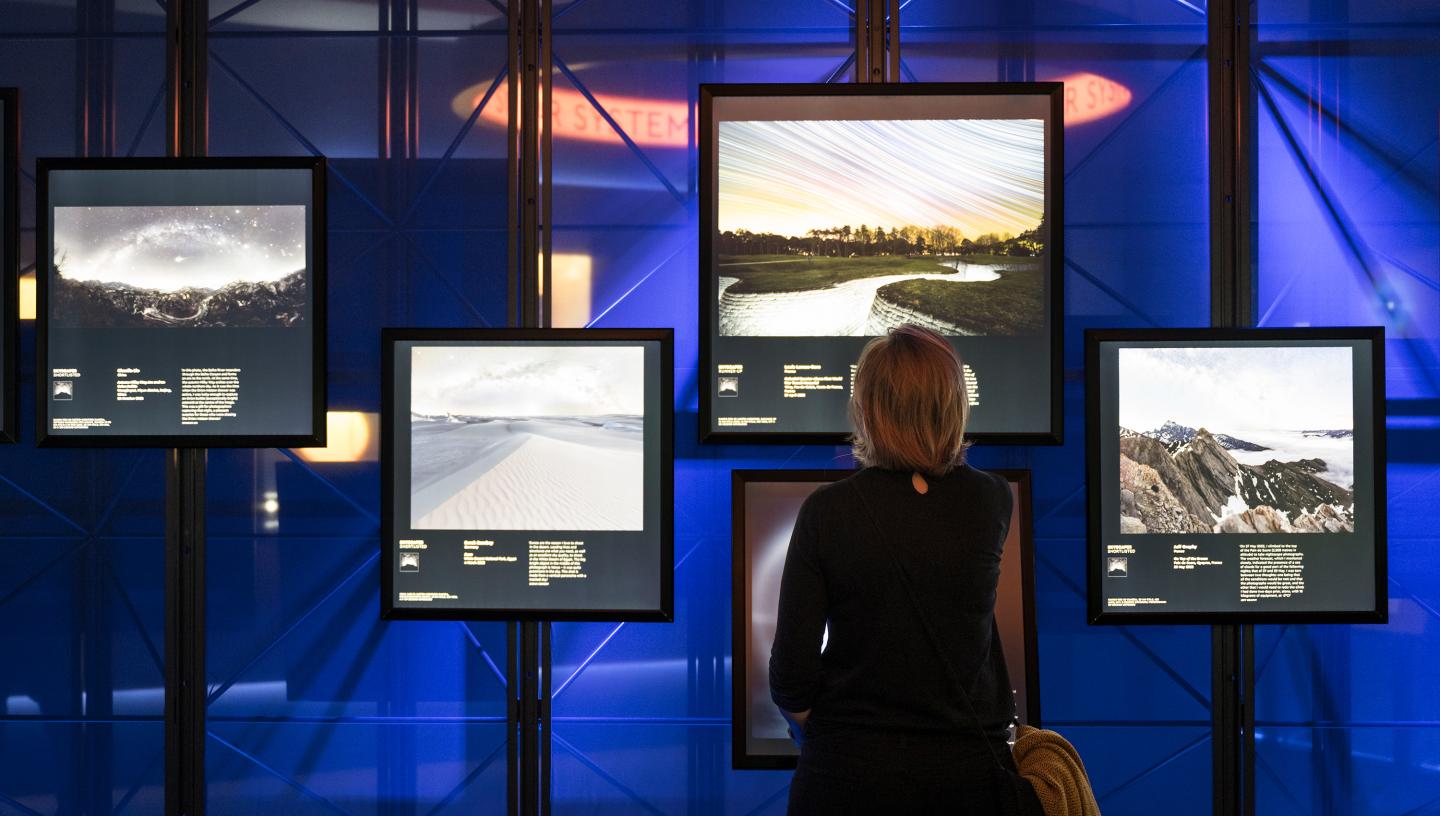
Visit the exhibition
Our partners



